The water cycle is an amazing process that we started to talk about when discussing evaporation a couple of weeks ago.
Today we will have a go at creating our own mini water cycle model.
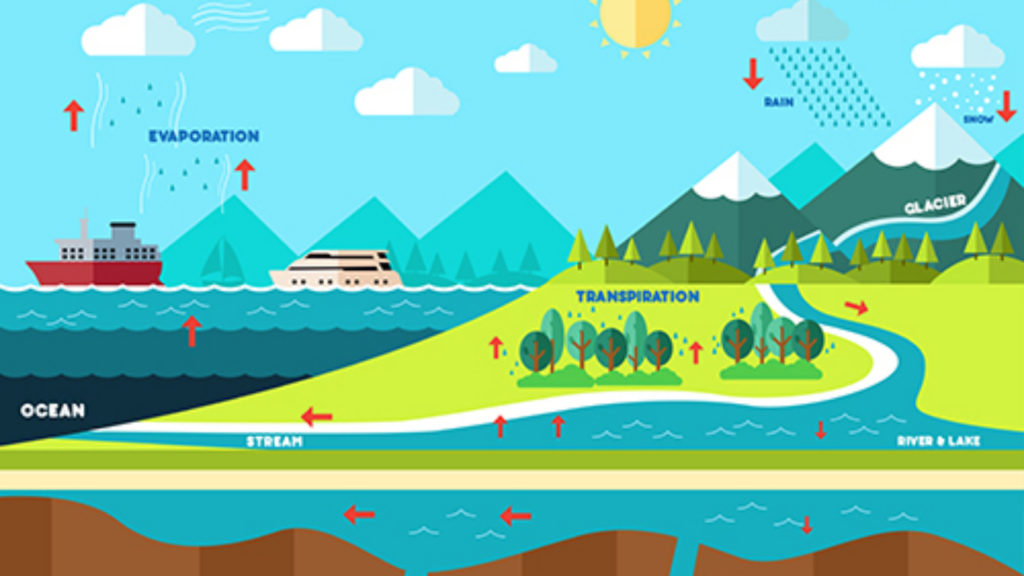
What is the water cycle?
Water on Earth is recycled over and over again; it’s always moving. It is this recycling process that we call the water cycle.
1. Evaporation – water evaporates into the air
The sun heats water on land, rivers, lakes and seas and turns it into water vapour.
The water vapour rises into the air.
2. Condensation – water vapour condenses into clouds
As water vapour in the air cools down, it turns back into tiny drops of water. These tiny drops of water form clouds.
3. Precipitation – water falls as rain
As the amount of water vapour in the clouds increases, the clouds get heavier and heavier. Water falls back to the ground as rain, sleet, or snow if it’s cold enough.
4. Water returns to the sea
As rainwater runs over the land back to rivers and the sea, some is taken up by and used by plants, and some returns to the air through transpiration. Most rainwater collects in lakes or rivers and flows back to the sea for the water cycle to start again.
The arrow from the sea to the sun – evaporation
The arrow from the sun to the clouds – condensation
The arrow from the Clouds to the mountains – precipitation
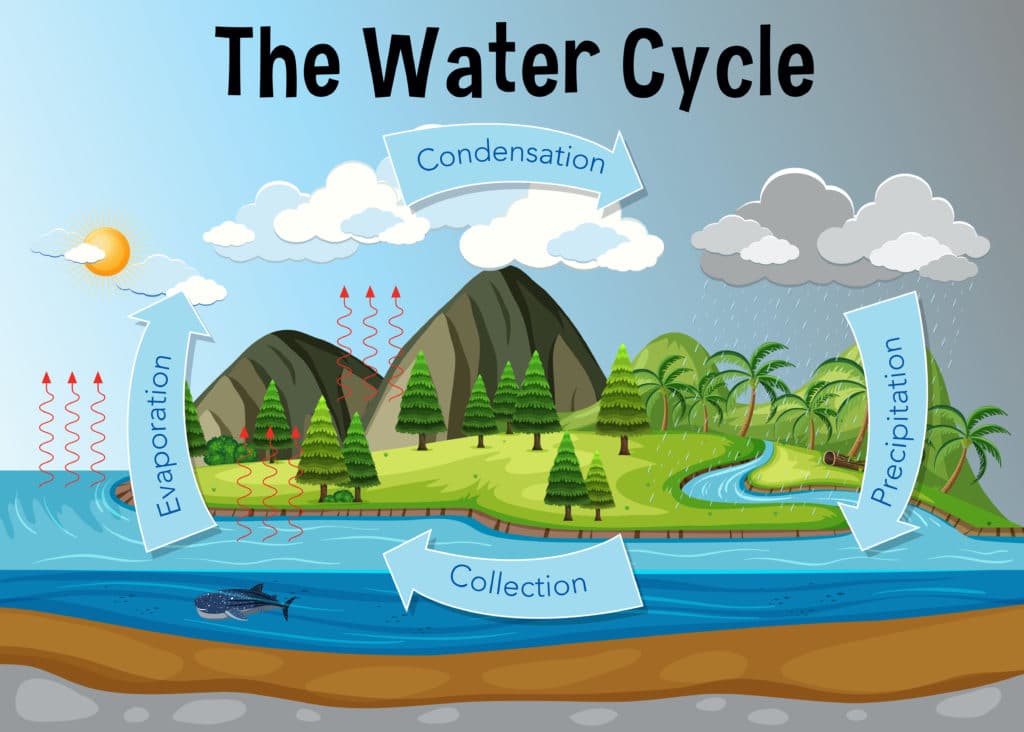
Make a water cycle model
You’ll need
A plastic bowl (mixing bowl size)
Cling film
A mug
String
Water
How to make a water cycle model
It is best to do this outside in a sunny place.
1. Place the mug in the bottom of the bowl
2. Add water around the mug so that it comes up to ⅔rd of the mug – if you can draw on the bowl, mark where the water level is.
3. Cover the bowl tightly in clingfilm and fasten it in place with the string.
4. Watch what happens!
How does the water cycle model work?
You should find that you can see condensation drops of water on the top of the cling film and that the water level has lowered, proving that evaporation has taken place. The condensation droplets are the clouds. They will be dripping back into the bowl, but you should find some water in the cup (your mountains), demonstrating precipitation!
More Water Cycle Activities
Can you make a water cycle in a bag? Draw the sun and a cloud on a bag. Add some water and stick it to the inside of a sunny window. Watch as the water evaporates and condenses inside the bag!
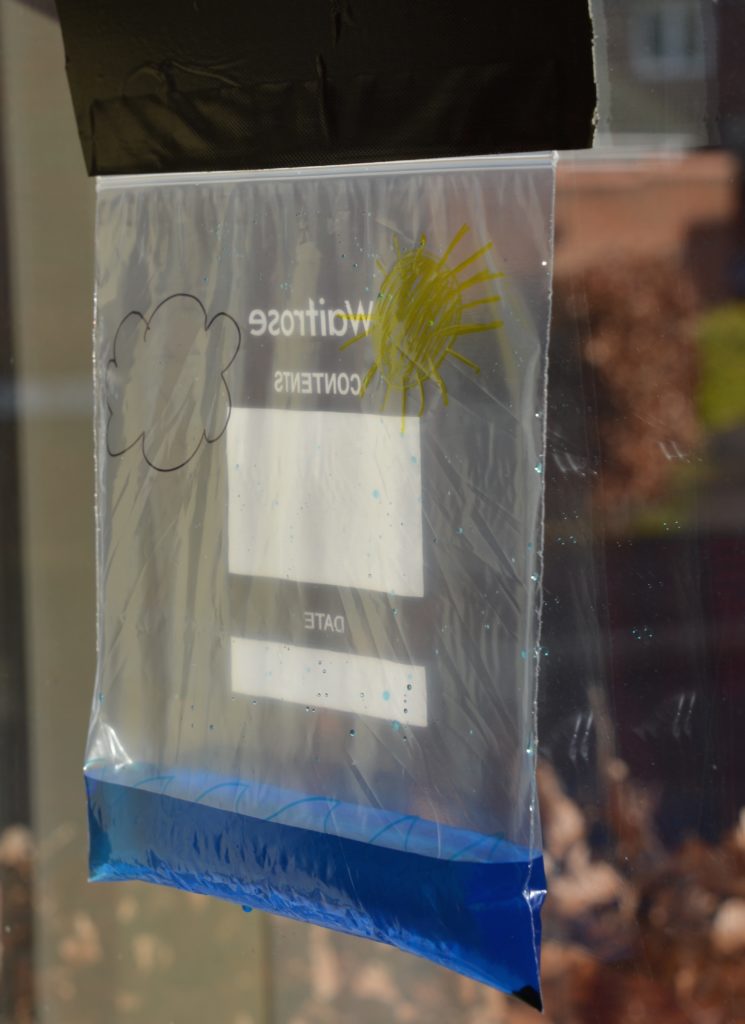
Water Cycle Worksheet
Print the water cycle diagram below, cut out the squares and stick them in the correct place!
We love this LEGO water cycle model from EDventures, and this raining sponge from The Pinterested Parent is cool too.
Did you know you can measure rainfall with a simple rain gauge?
Don’t forget to try my other weather science experiments too!
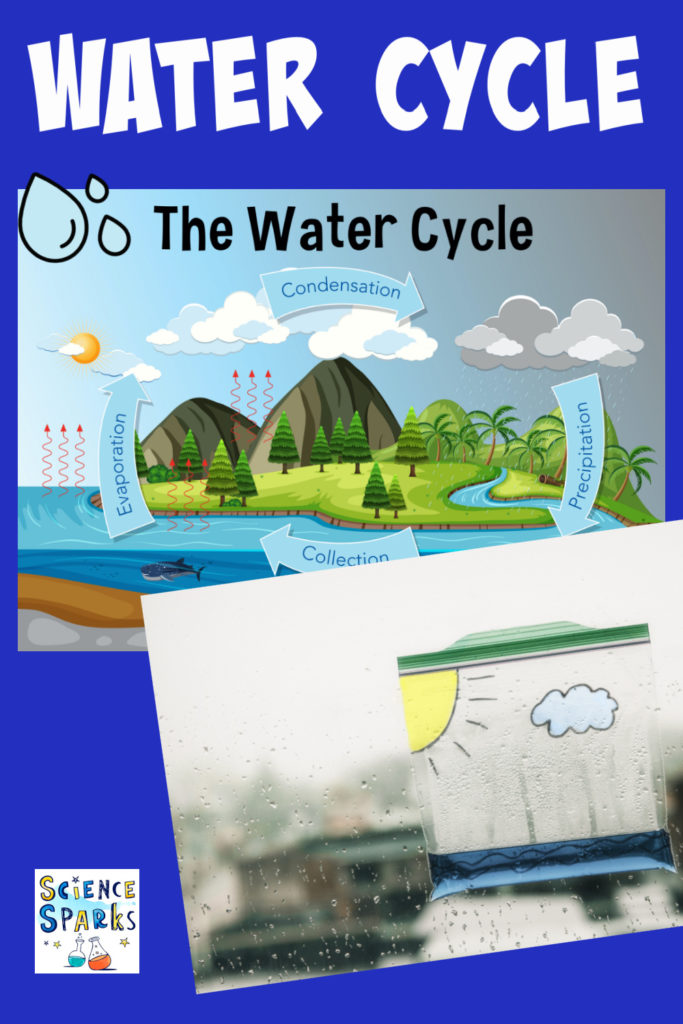
Last Updated on January 26, 2023 by Emma Vanstone

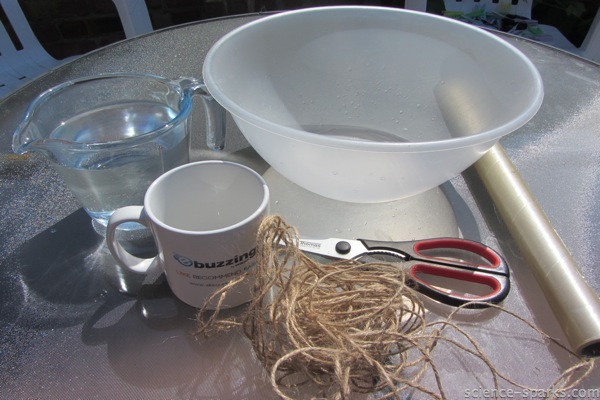
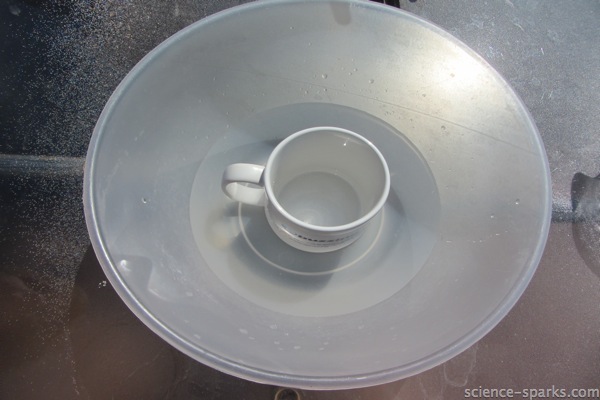
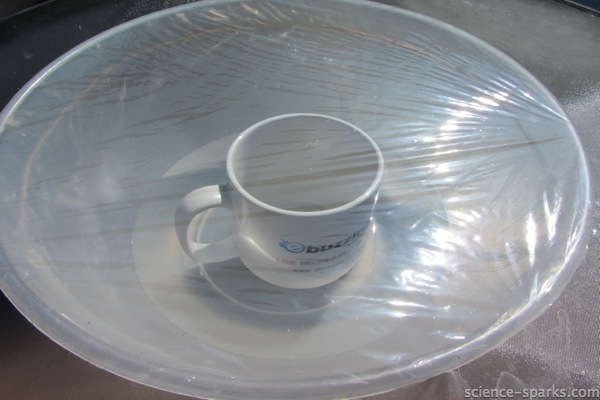
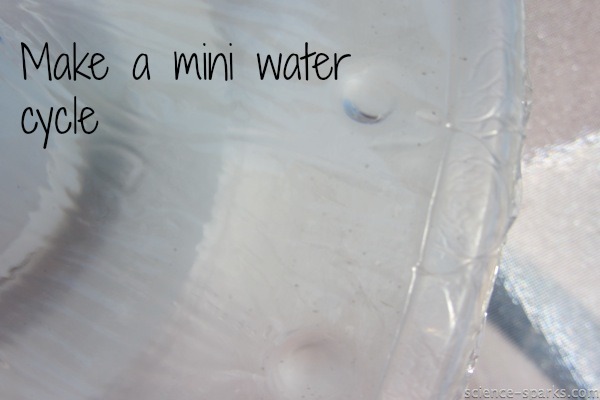
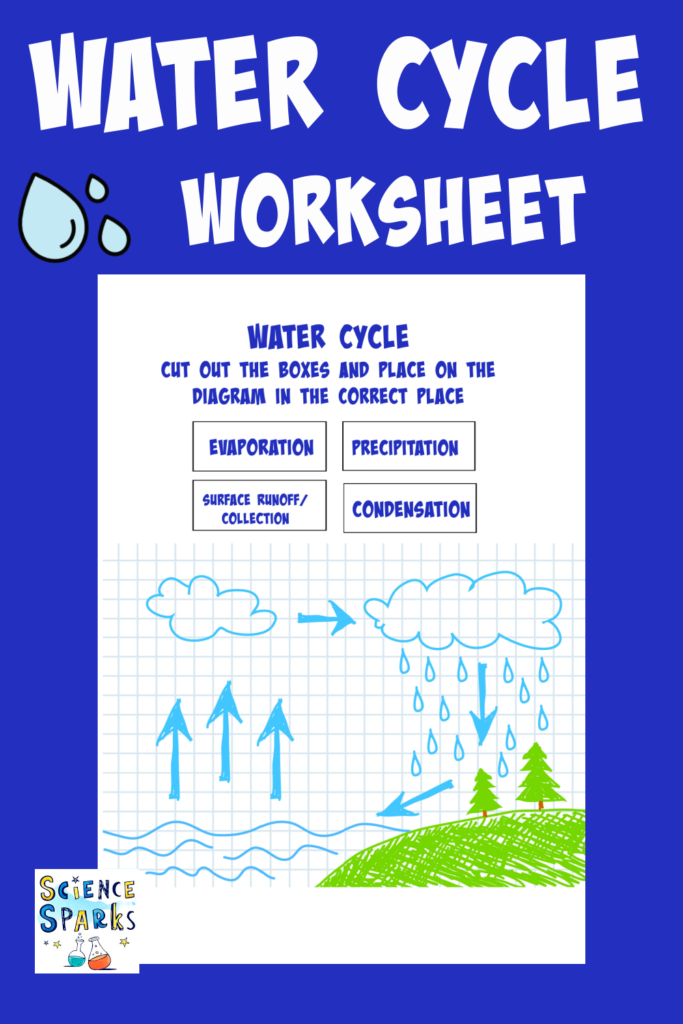
What a great activity! Love your diagram, too.
Thanks for sharing with Learning Laboratory at Mama Smiles =)
Thank you. xx
Such a great way to introduce education into play. All my kids love science experiments.
Its lovely to see them enjoy science isn’t it?
Ooh fabulous project – as always!
Thank you for sharing on Kids Get Crafty!
Maggy
Thanks Maggy 🙂
LOVE Science experiments to get kids interested in Science! We have this on our list to try too. Thanks for sharing it at TGIF! Have a great week
Beth =-)
So glad you liked it Beth!
What a great activity!! We will have to give this one a try. Thank you for sharing at Sharing Saturday!!
I’m pinning this to do with my boys in the near future, and I’m featuring on The Sunday Showcase tomorrow. Thank you for sharing!
Great idea! I’ll have to try it with my girls!
i loved it❤❤❤❤❤❤❤
This was So cool!!!!!!!!!!! I love science!
this is an excellent hands on activity to explain the process of the water cycle. students get to see each process and lean from observations. It is very engaging.
How long should the bowl be left outside before students check it?
This is awful so awful lets go science yay yippie kai yaaa
PS your unloved
Such a scenic view ,looks great. Lovely.